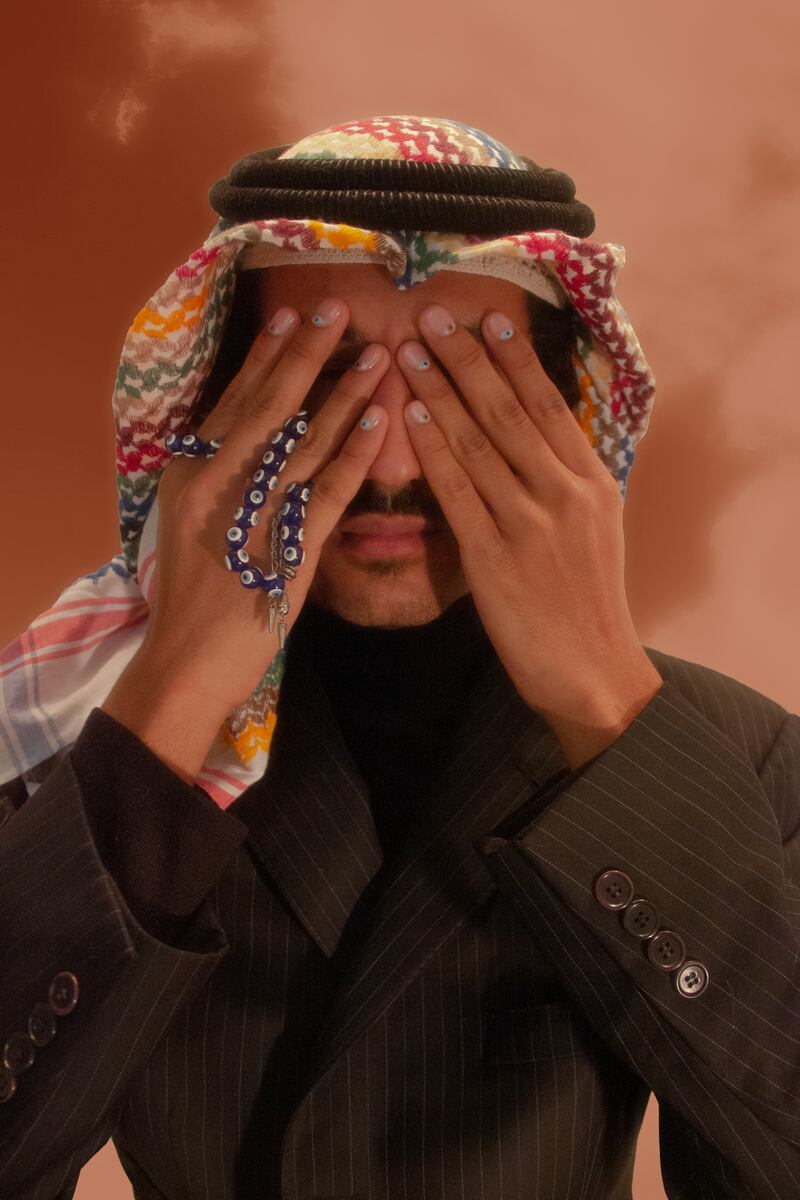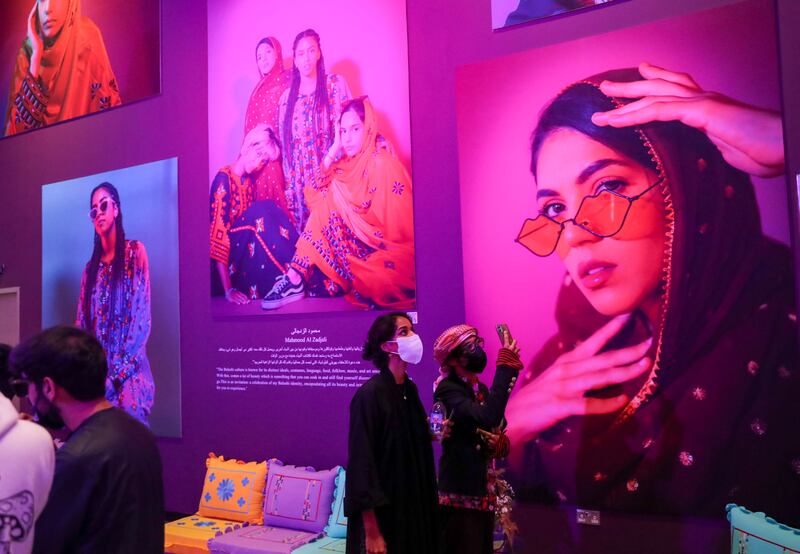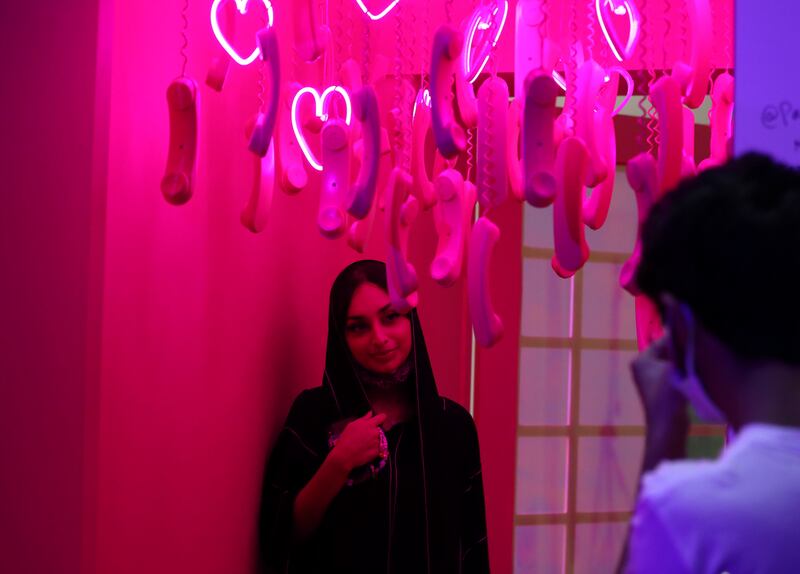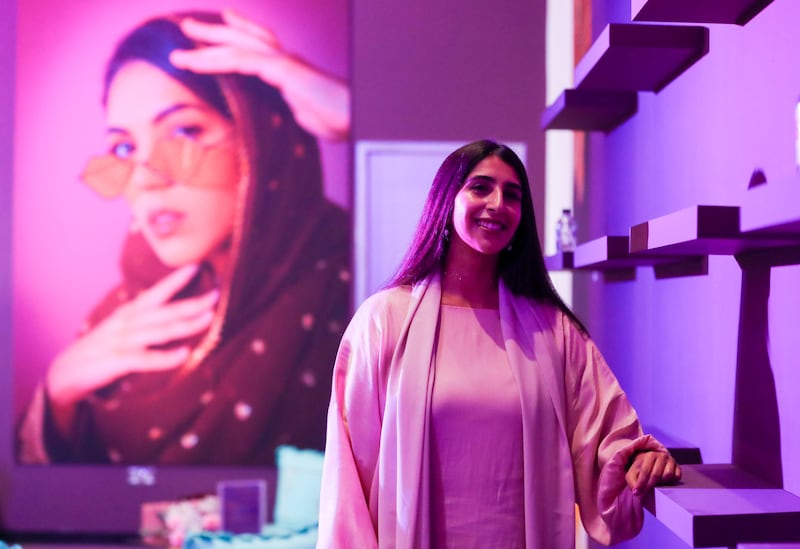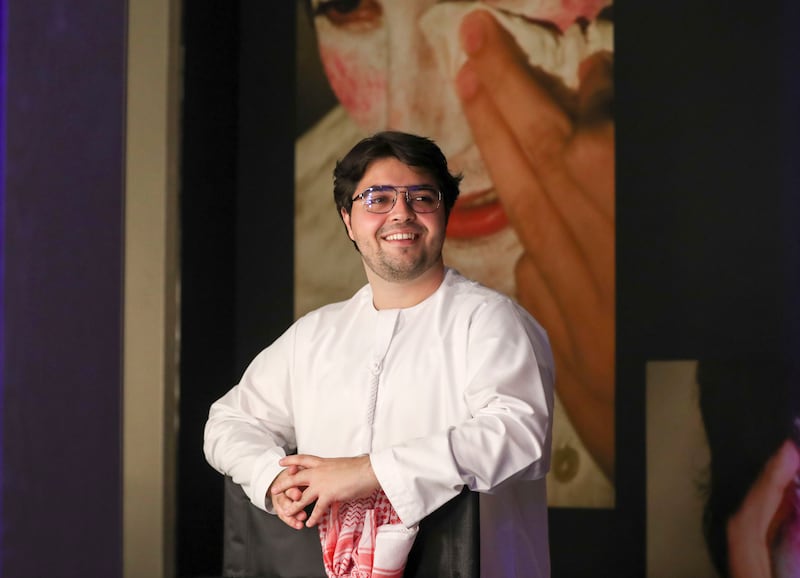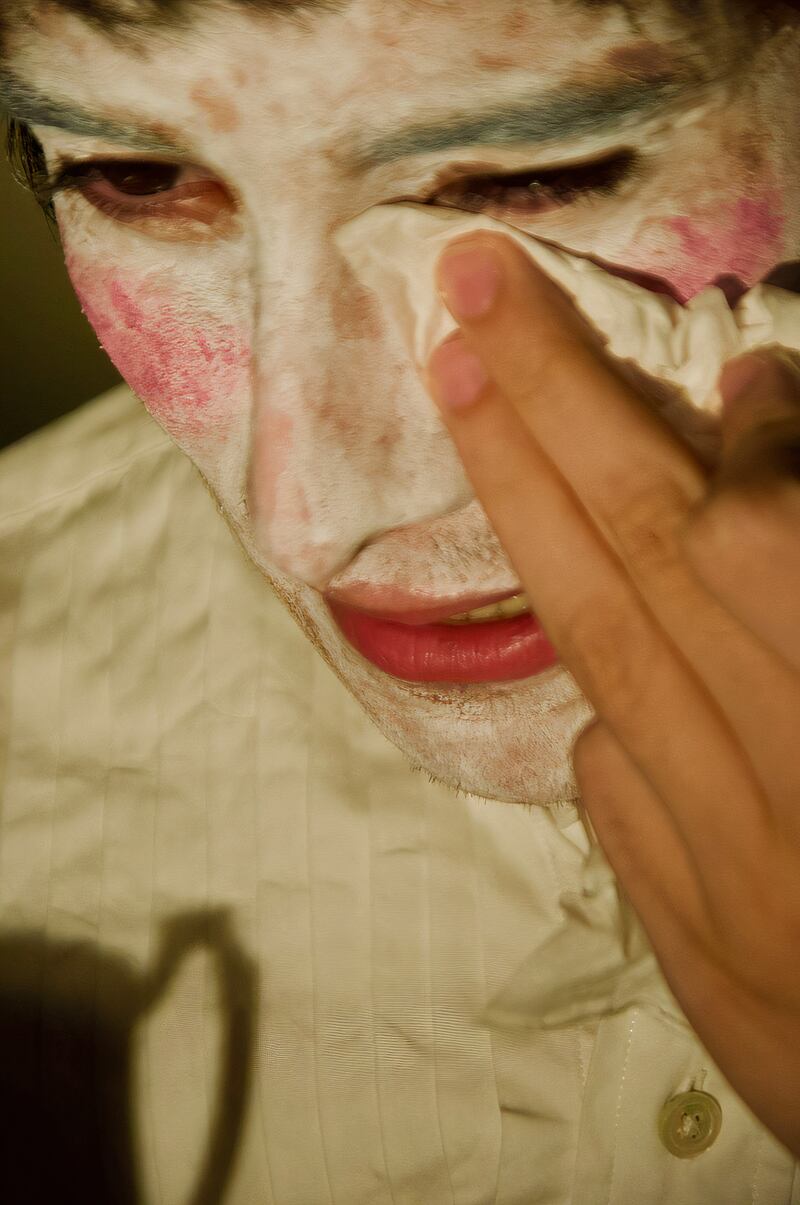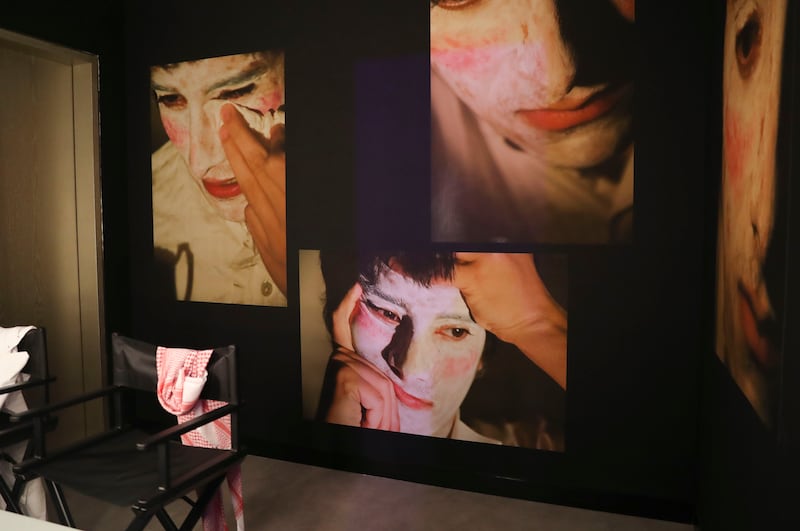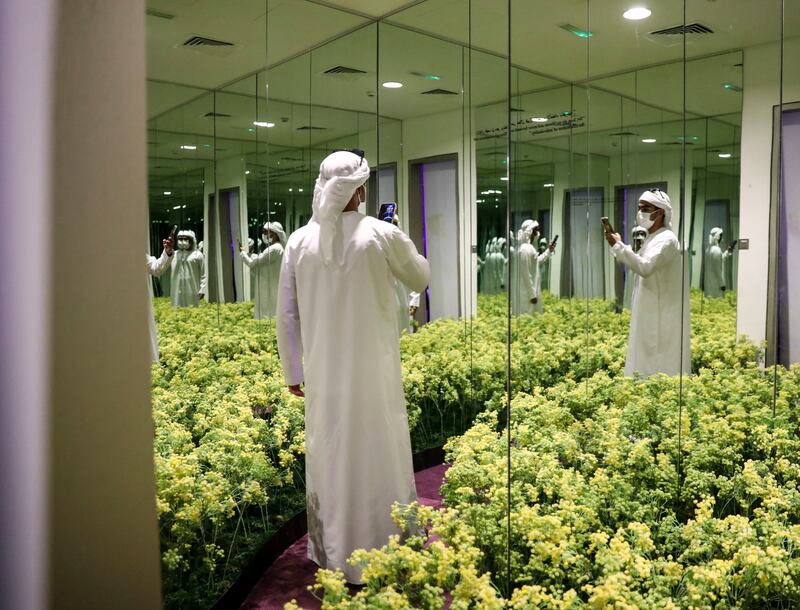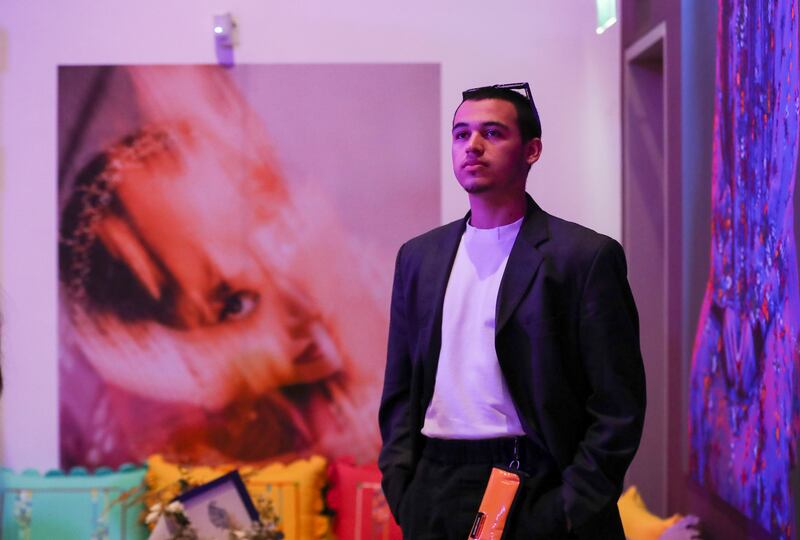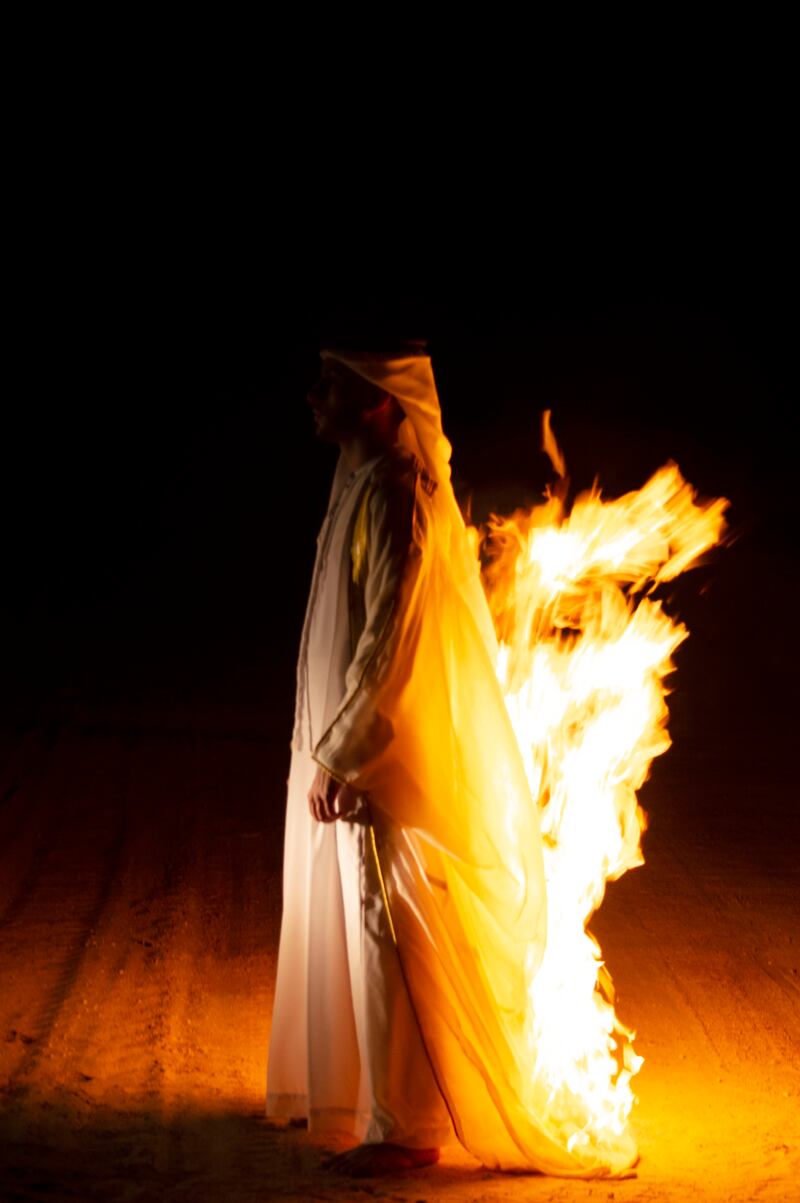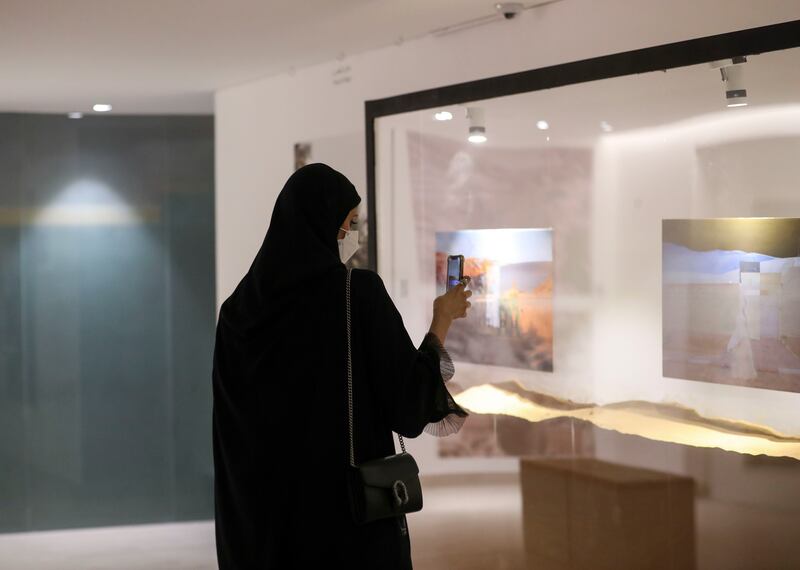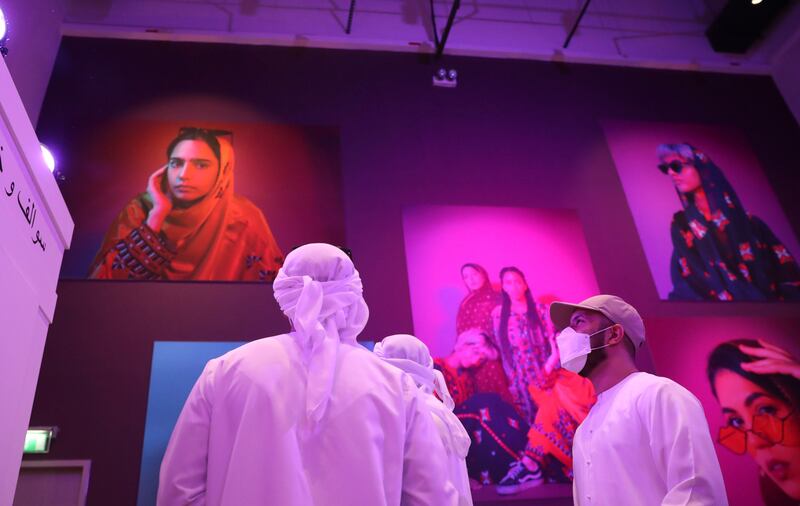What does it mean to be Khaleeji? Language, tradition, clothing, nationality – maybe, but not quite. A new exhibition at Abu Dhabi’s Manarat Al Saadiyat Photography Studio eschews these easy markers, and instead excavates a more intimate, honest and youthful view of Gulf identity.
Titled Khaleejiness, the show features 12 emerging artists and photographers from the Gulf, namely Bahrain, Kuwait, Saudi Arabia, Oman and the UAE, and includes photographs and installations. The show was conceptualised from a book, Encapsulated Volume 1: Photo Essays on Khaleejiness, which comes out this month from SWALIF Publishing House.
“Khaleejiness isn’t a real word,” says Salem Al Suwaidi, 20, founder of SWALIF. "It alludes to something else – it’s for an identity that isn’t stagnant, something that is constantly changing, entering different spheres and going through innovation."
The half-Emirati, half-Moroccan student of politics and geography at King’s College London established the publishing house in the UAE this year. He and Manarat Al Saadiyat curator Sara AlMheiri collaborated on the photography show, presenting a few of the artists from the book alongside others selected by AlMheiri.
The exhibition is divided into two parts, with the first section focusing on the Gulf landscape and architecture, including video stills from a work by Shamsa Al Mansoori wherein the artist overlays images of towering dunes against old Emirati neighbourhoods, producing ghostly visions of ever-shifting spaces.
There is also a photo series by Kuwaiti photographer Lama Al Jallal that follows a couple wearing the traditional kandura and abaya as they roam liminal locations, and sepia-toned collages of urban scenes and fragmented bodies by Hamad Al-Fayhani.
But these reflections on geography and space give way to something more intimate and unvoiced – and is only accessible to those who push harder, literally. To one side, an installation of hanging handsets illuminated by pink heart-shaped lights is the perfect set-up for a social media snap. But it’s also a portal to the other side of the show, accessible through a trapdoor.
“I wanted to create a secret door, meant for people who are open-minded enough to cross over,” says AlMheiri. Taking inspiration from photographer Abdulaziz Al Hosani, whose works are not in the show, she decided to bring to life his concept of the Hayabeb Club as the second part of the exhibition and, more importantly, a welcoming place for self-expression.
The phone booth, she says, references old ways of Khaleeji courtship, which involved reading poetry to each other over the telephone. “A lot of older generation Khaleejis would do that. So to enter into this club – it’s for people who know how to express love and express themselves,” she explains.
Painted with purple walls and suffused with purple-pink lights, the interiors of the Hayabeb Club are more vibrant than the first section. Larger prints fill the walls and a majlis-style set-up is adorned with candy-coloured cushions. Visitors can write messages of love on slips of paper, store them inside bottles and leave them on shelves for others.
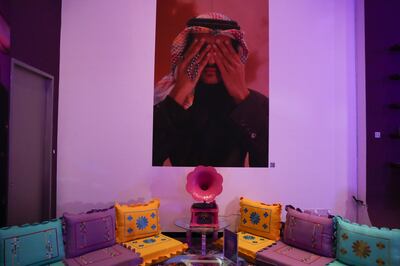
The works in the section are bolder, in many ways, such as Saudi artist Khaldoun Khelaifi’s portrait of a man in a black suit and a ghutra titled The Protector. The piece is part of his series called Why Are We Afraid of Colour. Instead of the typical red-and-white chequered pattern common in the kingdom, Khelaifi’s vibrant version is made with additional threads of yellow, green, blue and maroon. Playing with the expected masculine and feminine signifiers, the subject, who is covering his face with hands, shows off fingernails painted with the evil eye.
“I wholeheartedly respect and love our traditional attire and its evolution,” the artist’s text on the wall states. “But the problem today isn’t that men and women are in black and white. It is how both genders are harshly judged when they decide to add up some colour to their attires. The arguments are that it attracts people, gives the wrong intentions or equates to a sign of disrespect. That, to me, is fear. So, ‘Why Are We Afraid of Colour?’.”
Equally vibrant are the photographs by Omani photographer Mahmood Al Zadjali, celebrating Balochi culture through studio portraits of young women in the varicoloured embroideries worn by the tribal group, which traces its origins to parts of Iran, Pakistan and Afghanistan. Here, too, is a slice of Khaleeji identity, one that is influenced by the influx of migrant groups even before the formalisation of various Gulf states.
Meanwhile, Zayed Alhaddar personifies progress via a close-up image of a woman in embellished Emirati dress. Only a section of her face is in focus, while the rest of her body is softened by a sweeping motion. The photographer, 21, says it exemplifies the push and pull between tradition and progress in the UAE.
“There’s been a lot of movement in the country, though it’s only been around for 50 years. But amid this change, we stick to our roots,” he explains. Being half-Emirati and half-Welsh, he says he struggled to fit into society growing up. “I was mixed and I don’t speak Arabic. I didn’t fit in 100 per cent, but because I was different, I could also see different perspectives.”
Elsewhere in the show, the Khaleeji outfits of the white kandura and black abaya are not featured as symbols of belonging, a contrast to the way they are used, often by default, to signify Emiratis or other Gulf citizens in public and commercial visual campaigns. Nor is the traditional dress touted with the usual expressions of heritage or cultural pride. It is rarely worn.
In one instance, in fact, it is destroyed. In Mariam Alkatheeri’s photo series belief battle, a male figure walks the desert at night, and his kandura, lined with golden thread, is ablaze. The artist, 22, says the work represents a kind of purification, the casting away of “toxic traits and thoughts”.
“It is when you have these unnecessary thoughts about yourself that are coming from you and society. Sometimes you wear it and you think it’s your identity, but at the time I felt that I wanted to transform, to go from this place to another. So I felt like burning those [thoughts], and I did,” she explains.
A similar thread – of "putting on" an identity – runs through Ali Al Hosani’s installation Mise en Abyme, a term referring to an image within an image, or in the artist’s case a play within a play. It is of a backstage dressing room, complete with a scattering of make-up on a table, a highlighted script of Shakespeare’s Hamlet and make-up chairs on which a kandura and ghutra hang limply.
On the walls are painterly portraits of the artist, his face covered in white make-up, his expressions wistful and melancholic. For the duration of the show, the set-up will continually morph, with more elements added and swapped in the coming weeks.
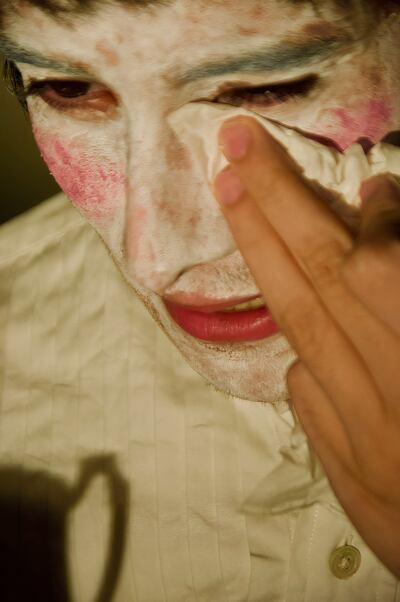
Recognisably, the work points to types of masking and performing identity, as well as an unsettled state of selfhood that mirrors the artist’s own experience. It is a confessional work that also condemns, revealing his share of personal and societal pressures.
“I constantly feel like a fraud, always pretending, playing parts for people’s consumption. I was never a good actor, though. I was never the stereotypical Emirati national, even when I tried. I always stood out. I sounded different. I carried myself differently. As a result, I was called an embarrassment, a burden and a disgrace. I then came to hate my body and mind. I found myself asking: Why couldn’t I play the part?,” Al Hosani writes in his text.
The artist, who is from Abu Dhabi, is currently studying at Parsons School of Design in New York. Like the rest of the participants in the show, Al Hosani offers rare candour, peeling away surface signifiers to get to uneasy truths.
The show leaves the notion of “Khaleejiness” undefined, and fittingly so, as attempts at concretising cultural, political and societal identities, wherever they may be, often come up short. What is evident and encouraging in the show is the thoughtful and ongoing search, particularly from the younger generation of Gulf artists and photographers, who will inevitably have to decide for themselves what the future of Khaleejiness could mean.
Khaleejiness is on view at Manarat Al Saadiyat Photography Studio, Abu Dhabi until Thursday, February 10. More information is available at manaratalsaadiyat.ae
